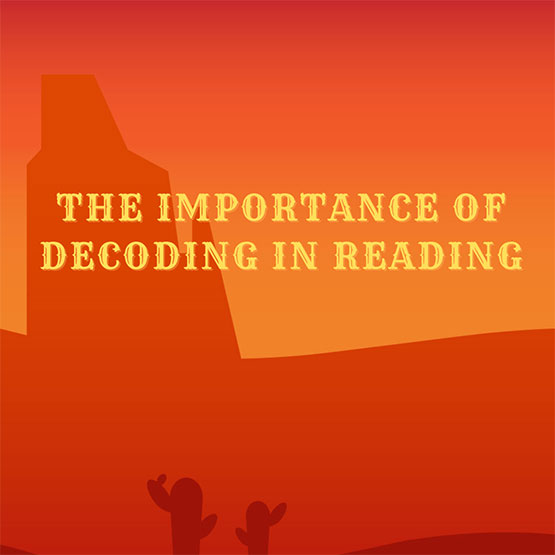Decoding and Its Importance in Reading Instruction
What is decoding?
Decoding is the ability to apply knowledge of letter-sound relationships, including knowledge of letter patterns, to pronounce written words correctly. Decoding involves translating print into speech by rapidly matching a letter or combination of letters (graphemes) to their letter sounds (phonemes) and the ability to recognize the patterns that make syllables and words.
Understanding these relationships allows children to recognize familiar words quickly and “sound out” or “decode” unfamiliar words they haven’t seen before. Decoding skills are essential for reading, spelling, and pronouncing new words.
Children are taught, for example, that the letter p represents the sound /p/and that it is the first letter in words such as pose, pat, and paw. When children understand sound-letter correspondence, they can sound out and read (decode) new words.
Why is decoding important?
If students cannot decode words, their reading fluency will suffer, their vocabulary will be limited, and their comprehension of what they read will be hindered. Decoding skills are the foundation on which all other reading instruction is built. Decoding is a skill set that students must master to become successful readers.
Most reading experts agree that phonemic awareness is the most critical skill necessary for reading success—the ability to hear, identify and manipulate individual sounds (phonemes) in spoken words. Decoding is an essential part of integrating phonemic awareness and the written word.
While decoding is a learned skill, some students may have difficulty learning to decode for various reasons. These include poor phonemic awareness skills, difficulty understanding the relationship between letters and sounds, or poor visual memory.
What is the difference between decoding and encoding?
Decoding is the ability to apply knowledge of letter-sound relationships, including knowledge of letter patterns, to pronounce written words correctly.
Encoding is the process of translating spoken words into written form. It involves mapping the sounds of spoken language onto the letters of written language. To be able to read, students must first learn how to decode words. However, to spell words correctly, they must also learn how to encode words.

What method should we use to teach decoding?
Phonics can be taught both implicitly and explicitly. Implicit phonics begins with a whole word and then looks at beginning sounds, ending sounds, and context clues. Explicit, systematic, and multi-sensory phonics instruction produces practical decoding skills.
Explicit phonics does the reverse by building from a single letter to a word, then integrating sight words, etc. Phonics must be taught explicitly and systematically. Phonics taught any other way could be compared to an alphabet soup of sounds. The way it is taught determines the success level, particularly for those with learning disabilities such as dyslexia.
The Reading Ranch Method® employs a highly interactive, explicit system to teach phonics.

